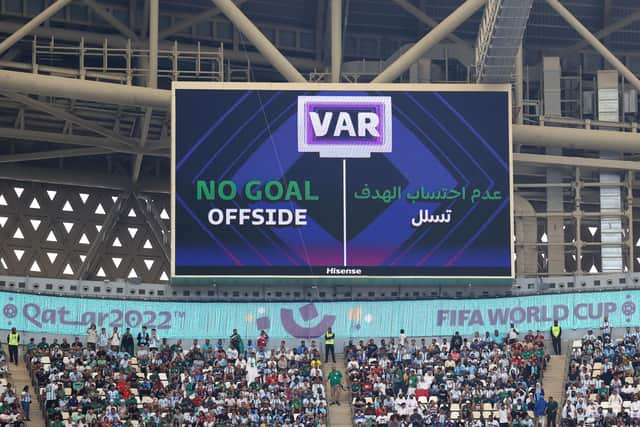Major VAR change being used at World Cup could be introduced in Premier League as Leeds United, Liverpool, Arsenal, Aston Villa, Manchester United and Newcastle United affected
Lautaro Martinez had a goal ruled out after a VAR review before Saudi Arabia came from 1-0 down to record a famous 2-1 victory. FIFA estimates the technology will help to cut decision-making time on offsides from an average of 70 seconds using current video review methods down to between 20 and 25 seconds.
Crucially, FIFA shows spectators in the stadium and viewers at home a 3D illustration of the decision after it has been made, most likely at the next break in play after the incident.
How does it work?


Advertisement
Hide AdAdvertisement
Hide AdThe system relies on 12 cameras installed underneath the roof within each stadium, all 100 per cent synchronised with each other. Optical tracking data looks at 29 data points on each player, covering their limbs and extremities, plus the position of the ball, 50 times per second.
The World Cup ball houses a sensor which transmits data to the video operations room 500 times per second. This technology combines to track the limbs of each player and also the precise ‘kick point’ in real time using artificial intelligence.
When an offside is detected by the system, an alert is relayed to the offside video operator, with the lead VAR then manually validating the kick point and the offside line.
The VAR then communicates what he or she can see to the on-field referee. The referee can still use the monitors at the side of the pitch to check issues such as interference with play or other infringements which may render an offside call irrelevant or inaccurate.
Will it be introduced into the Premier League?
Advertisement
Hide AdAdvertisement
Hide AdA similar system has been used in this season’s Champions League with the Premier League considering whether to adopt the system from next season – meaning it could be used at places like Elland Road, the home of Leeds United.
In the Premier League, VAR officials manually draw lines when ruling on offside decisions which has led to some controversy in fixtures this season. Now, the top flight is looking to make changes in line with UEFA.
Fans want to see vast improvements in how VAR is used in the Premier League, according to the Football Supporters’ Association, and this appears to be a step in making the video system more effective.
“We’ve made clear to PL that the overwhelming majority of match-goers and TV viewers think VAR makes football less enjoyable. Vast improvements needed,” the FSA said earlier this season.
Advertisement
Hide AdAdvertisement
Hide AdIt continued: “From day one we’ve been critical of VAR’s implementation. We supported goal-line technology as it has proven instantaneous and doesn’t interrupt flow of the game. The same cannot be said for VAR.”